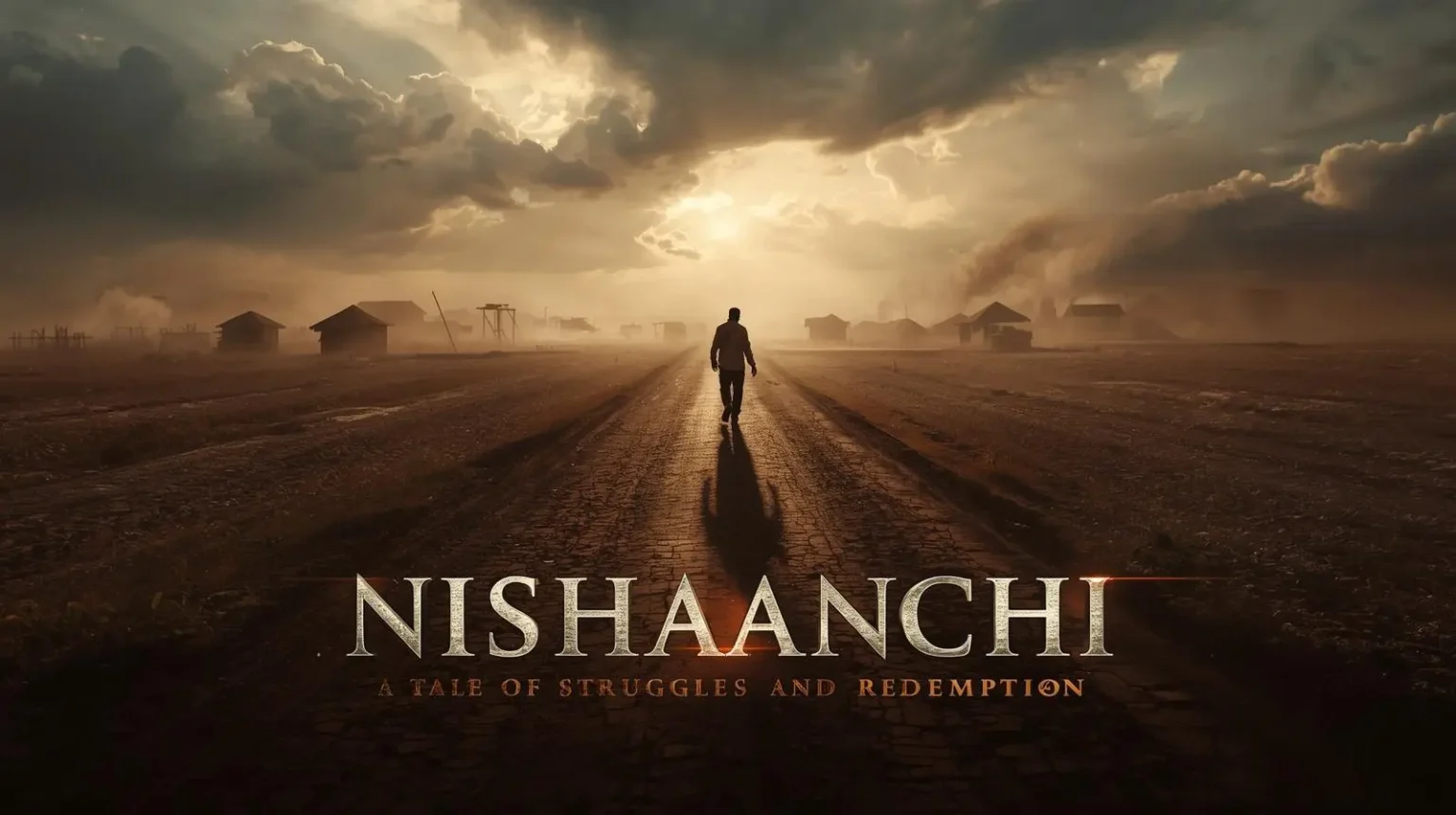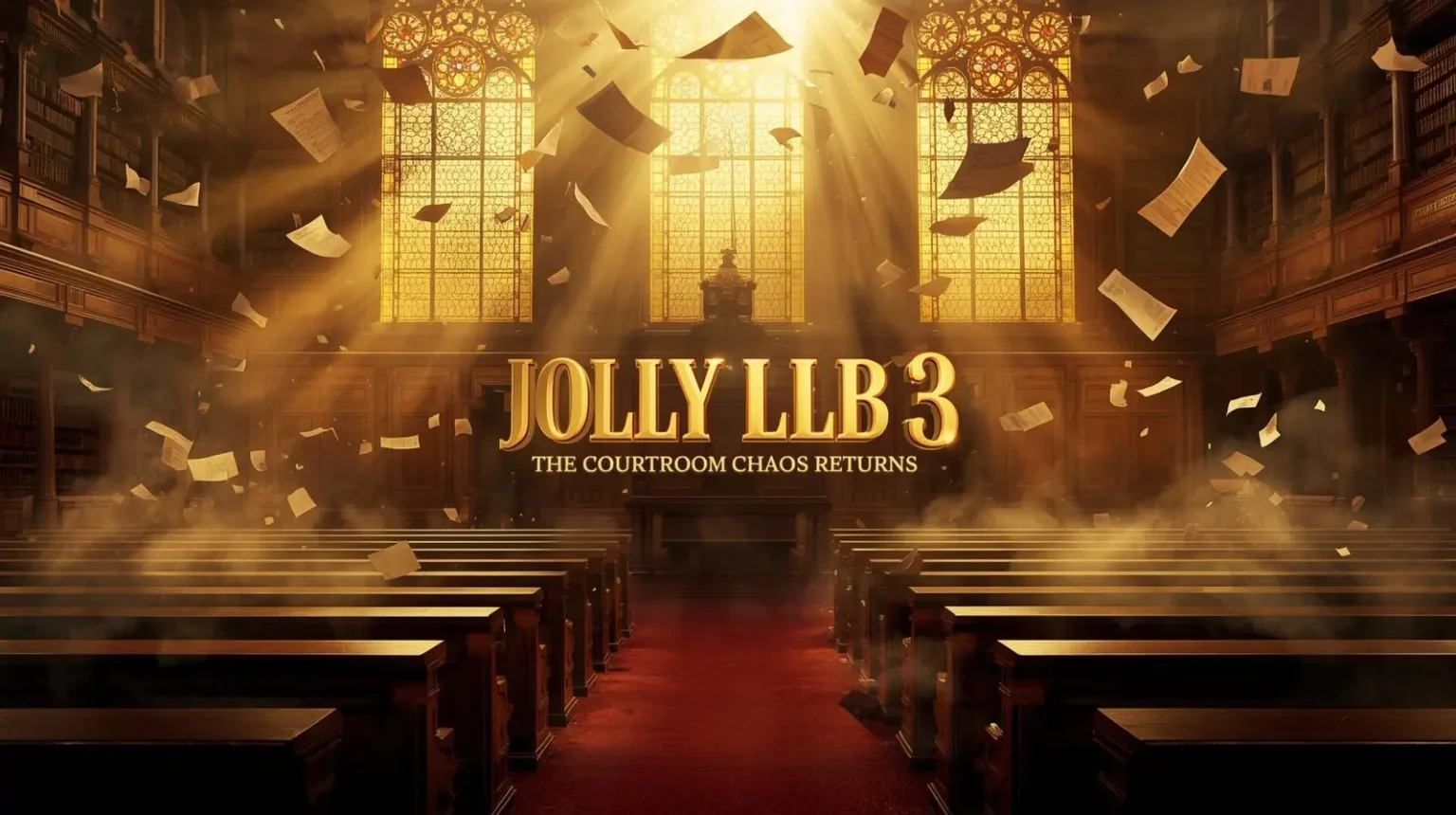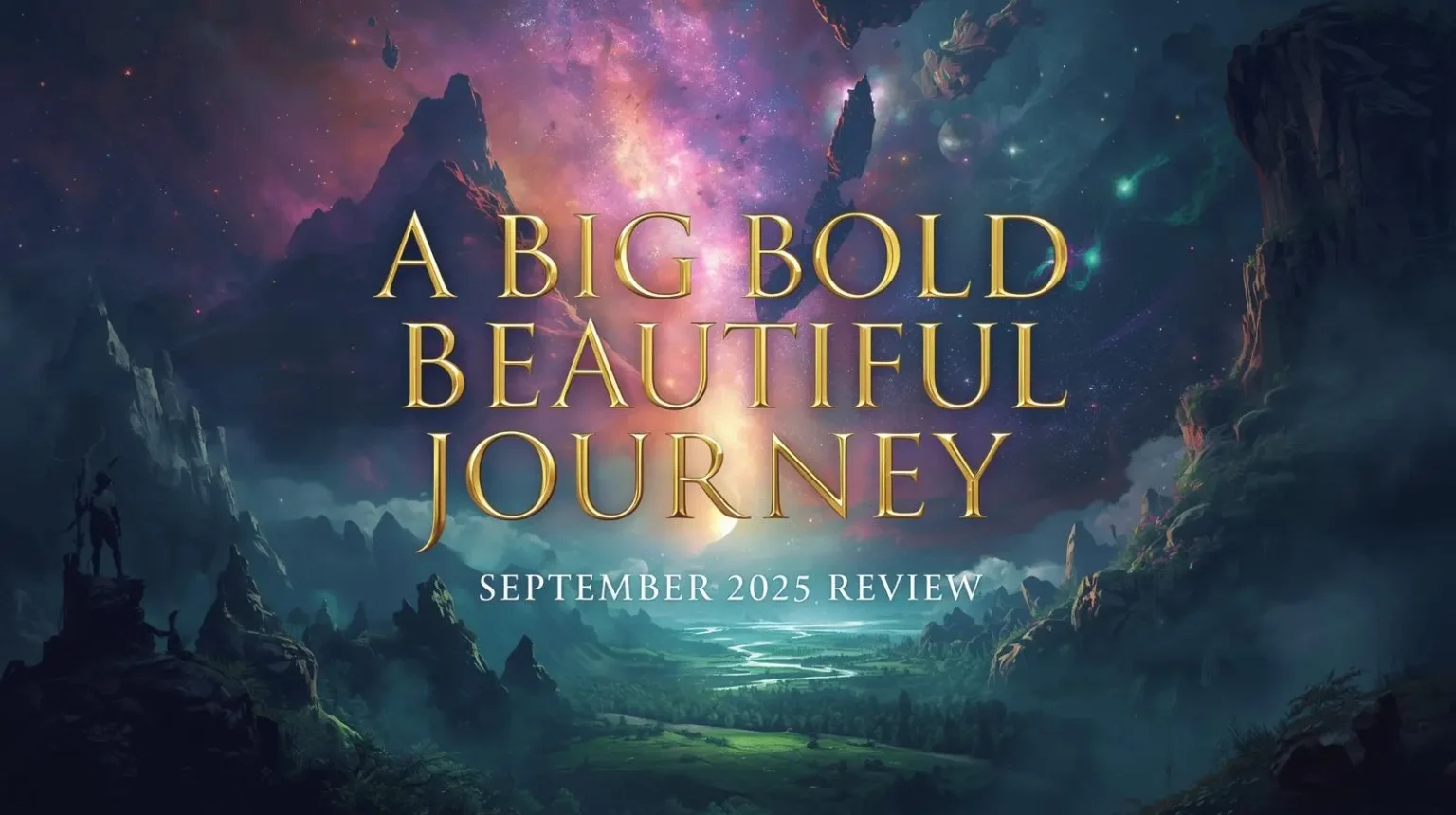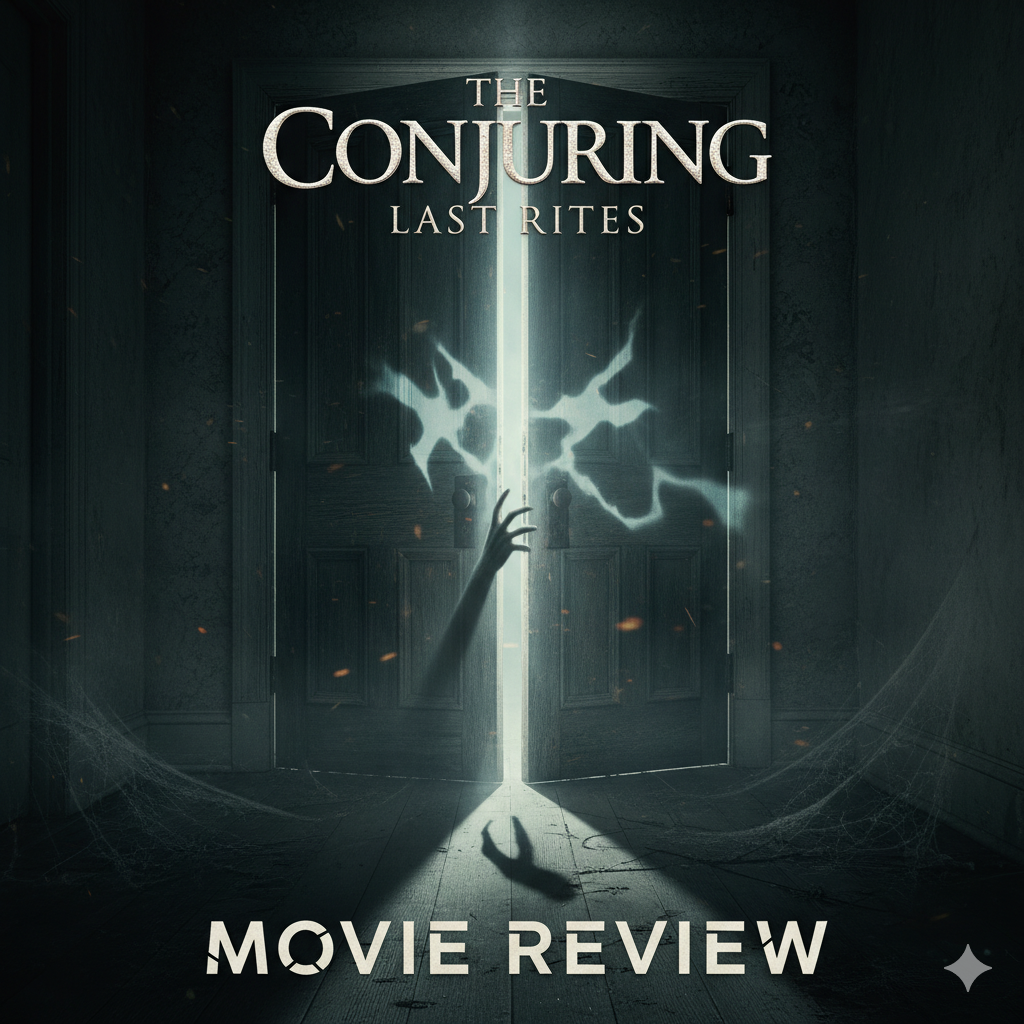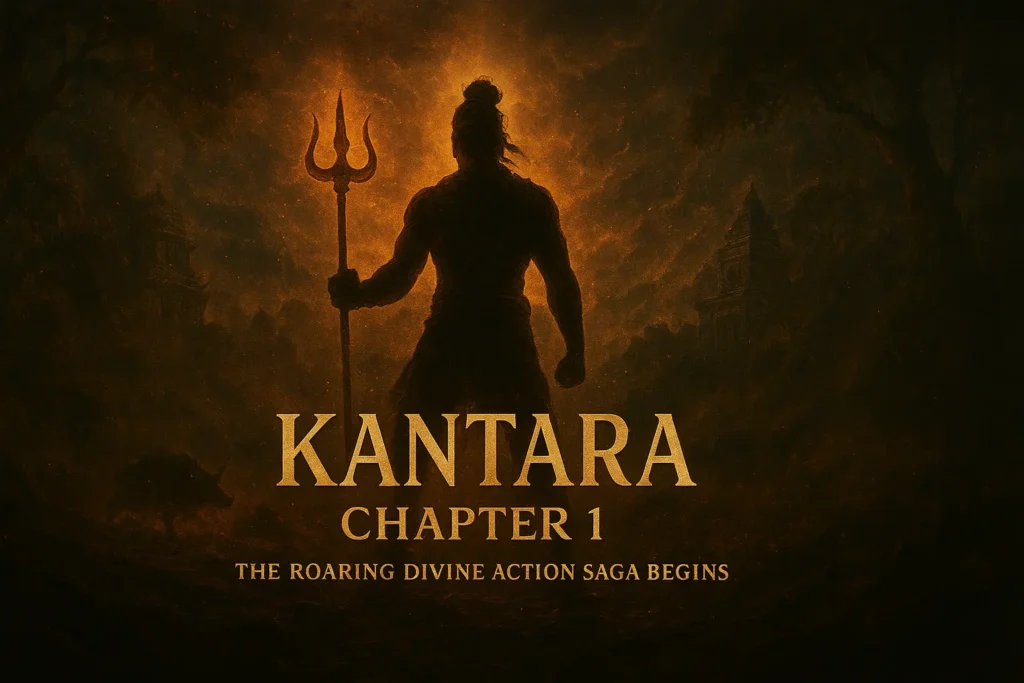
Table of Contents
Introduction
The release of Kantara Chapter 1 today is a massive moment—not just for Kannada cinema, but for the entire Indian film landscape. The original Kantara (2022) wasn’t just a hit; it was a miraculous cultural reset. It proved that stories rooted deep in regional soil, devoid of metropolitan gloss, could find a national, even global, audience. That film was a force of nature.
This prequel, however, enters the arena carrying an immense weight: the burden of a blockbuster legacy. Prequels are inherently dangerous; they seek to explain the magic, often risking demystifying the legend. Chapter 1 takes on the gargantuan task of showing us the birth of the Daiva Aradhane tradition and the lineage of the protectors.
The curiosity surrounding this film has been fever pitch, driven by the memory of that spectacular, visceral climax from the first part. But here at Flixvenue, we’re asking the hard question: Has Rishab Shetty managed to deepen the lore with a grand, thoughtful epic, or has the ambition of the sequel inadvertently sacrificed the raw, spontaneous magic of the original? Initial reception is incredibly mixed—split between awe for its technical scale and frustration over its demanding pace.
Director and Management
The entire vision, success, and scrutiny of this project fall squarely on Rishab Shetty’s shoulders. He is the singular creative force here—the director, the writer, and the lead actor.
* Director: Rishab Shetty
* Producer: Hombale Films
* Music Director: B. Ajaneesh Loknath
* Cinematographer: Aravind S. Kashyap
Shetty, the director, shows a distinct evolution in scale. He neatly moved away from the handheld, hyper-realistic, sometimes excellent camera work of the original and embraced a grand, static, and often beautiful visual language. He’s making a statement: this is a mythological epic that requires reverence. The film is less about a man running in the forest and more about the heavy, slow process of fated destiny.
The production team, Hombale Films, deserves strong credit. The budget, although undisclosed, has clearly been channeled into short period detailing and cutting-edge visual effects that look seamless—a massive step up for regional Indian cinema. They gave Shetty the freedom to prioritize his singular artistic vision over commercial run-time cinema, which is a rare but admirable move by a production house of this size. The sound design team and Ajaneesh Loknath’s score are the true backbone, using indigenous rhythms and heavy percussion to create an atmosphere that is genuinely oppressive and sacred.
Cast and Characters
The power of the film rests on the magnetic, often terrifying, presence of its lead, anchored by a deeply authentic supporting cast.
Rishab Shetty as The Protagonist: This performance is a tour-de-force of physical endurance and emotional chaos. Shetty is portraying a completely different man from Shiva—this is a chieftain weighed down by the future, driven by a raw, aggressive desire to secure his people’s safety, even if it means confronting the divine head-on. His body language is heavier, his gaze more complex. His ability to switch from moments of quiet vulnerability to the volcanic energy of the possessed form is the film’s biggest asset. This is a brave performance that demands the audience’s full attention.
The Ensemble Cast (Village Elders & Villains): The supporting cast, comprised largely of talented actors from the Kannada industry, gives essential authenticity. They ensure that the mythological conflicts feel grounded in human concerns. The collective fear, reverence, and surrender of the villagers provide the necessary emotional mirror for the audience.
Budget of the Movie
While the official budget is yet to be fully disclosed , Its roughly 120-150 crores which is very higher than part 1.
The makers clearly aimed for an international standard of filmmaking. The money was primarily invested in:
Period Production Design: beautiful recreation of 17th-century coastal dwellings and palace environments.
Advanced Visual Effects (VFX): Utilized subtly to enhance the mystical elements and the natural landscape, rather than for cartoonish over-the-top action.
Cinematic Scale: Hiring a massive crew, extensive shooting in remote forest locations, and elaborate costume design for the rituals.
This investment is evident in the film’s high-quality look. Chapter 1 proves that a large budget can be used to elevate artistic quality and cultural authenticity, rather than just filling the screen with unnecessary CGI spectacle.
Review (Detailed)
This film is a complex piece of art, and it demands an equally complex analysis. It is a film of stark contrast, with breathtaking highs and moments where the narrative momentum completely stalls.
The Problem of Pacing and Exposition (The Flinch Point) : The single biggest creative flaw, and the main source of mixed audience reviews, is the deliberate, slow pacing of the first 90 minutes. Rishab Shetty, the writer, feels compelled to explain every single detail of the lineage, the curse, and the protocol governing the Daiva. While this level of mythological detail is fascinating on paper, on screen, it leads to prolonged, heavy dialogue sequences that feel more like a scholarly lecture than a narrative build-up.
Screenplay vs. Storytelling: The script is detailed and layered, but the screenplay execution in the first half could have been tighter. There’s a clear artistic choice to mimic the slow, ritualistic rhythm of the village life, but this choice tests the patience of the mass audience expecting the original’s immediate, fiery energy. For those who can endure the weight of this foundation, the reward is there. For others, it will feel frustratingly inert.
The Art of the Dark Atmosphere :
Where the film truly excels is in its mastery of atmosphere. Shetty doesn’t rely on cheap jump scares. Instead, he uses shadow, sound, and stillness to create an overwhelming sense of dread and spiritual intrusion.
Cinematic Psychology: The protagonist’s struggle is visualized through the cinematography. The oppressive darkness in his palace, contrasted with the fleeting moments of pure, unfiltered sunlight in the forest, beautifully symbolizes his internal battle between the curse and the grace. The film makes you feel the primal fear of confronting the unknown. This is intelligent horror—it makes the viewer uncomfortable by challenging their understanding of reality.
The Thematic Evolution: From Local Dispute to Existential Destiny :
Kantara was about a land dispute; Chapter 1 is about existential destiny. The protagonist is not fighting a corrupt politician; he is fighting fate itself. He is struggling against an ancient pact, trying to bend the will of the divine for the protection of his community.
Complexity in Character: Rishabh doesn’t present a simplistic hero. His character is driven by a mixture of arrogance, desperation, and love for his people. This makes his eventual surrender—or transformation—in the climax far more poignant and tragic. The film successfully navigates the morally grey area, asking if the pursuit of power, even for a noble cause, is inherently corrupting.
The Action: Earthy and Brutal :
The action choreography fits the period perfectly. It’s not polished or stylized; it is raw, earthy, and brutal. The violence is often sudden and shocking, using natural weaponry and martial arts styles rooted in the local traditions. This realism is highly effective, reminding the audience that these are not superheroes, but warriors of their time. The sequences are visually stunning because they feel heavy, painful, and grounded in the struggle for survival.
Current Rating
IMDB: Expected 8.7/10
Rotten Tomatoes: Expected 90% Public Avg
Public Review Avg : 8.5/10 |
Our Rating : 8.6/10
Who Should Watch the Movie?
- Viewers with high intrest for slow, deliberate, and detailed storytelling. If you loved the mythological depth of Tumbbad or the atmospheric quality of Pari, this is for you.
- Fans who want to see technical beauty—especially sound design, cinematography, and production design—setting a new symbol in Indian cinema.
- Those who appreciate complex character arcs where the hero is deeply flawed and conflicted.
Story of the Movie (Short Summary)
Set in the 17th century, the film introduces us to a community struggling in local power and seeking divine aid. Their chieftain, a troubled man with a history of internal struggle, makes a desperate plea to the forest deities. The story follows his arduous journey and the heavy price he must pay—a journey that culminates in the establishment of the Daiva Aradhane ritual. It’s a dark, fated tale detailing the moment a flawed man accepts the generational curse, becoming the first protector whose legend defines the future struggles of his heirs.
Audience Response
The audience response is fascinatingly polarized.
Praise: Universal praise for the climax sequences and the scale and depth of the visuals. Social media is flooding with posts about the sound design and Rishab Shetty’s powerful acting.
Criticism: The dominant complaint centers on the huge running time and the slow, dialogue-heavy nature of the first half. Many mainstream viewers found the mythological explanations too detailed and the film’s mood too dark, missing the playful moments of the original.
The first-day box office collection is strong, driven purely by the goodwill and curiosity generated by the original. However, its longevity will depend entirely on cinephiles convincing the general audience that the wait is worth the reward.
Comparison with Other Movies
Compared to recent high-budget Indian epics, Kantara Chapter 1 stands apart because its authenticity and spiritual darkness over generic warfare.
- It has the visual ambition of a Baahubali but the narrative complexity and mood of a Tumbbad.
- It offers a grittier, more realistic vision of the past than most recent Bollywood historical films, grounding its fantasy in palpable cultural reality.
Its greatest strength is its refusal to feel derivative. It carves out its own unique, dark, mythological niche.
Audience Emotions and Takeaway
Viewers don’t leave the theatre simply entertained; they leave feeling spiritually and physically drained. The movie feels emotions of awe, reverence, and sadness. The sheer intensity of the climax, where Shetty channels the divine power, leaves the audience breathless. The movie reminds us that the line between human and divine is thin, and that the greatest powers come with the most terrifying costs. It is a film that haunts you long after the lights come up.
Conclusion
In short, Kantara Chapter 1 is a necessary, magnificent, and often difficult film. It is a work of uncompromising artistic integrity that prioritizes the epic mythology over commercial pace. It may not be the immediate, spontaneous crowd-pleaser that the first film was, but it is a bolder, more enduring piece of cinematic craftsmanship. If you are willing to invest your time and patience, this film will reward you with a cinematic experience that is rare and unforgettable.
Final Review
★ Our Verdict: 8.6/10
A masterful, technically brilliant origin story. It’s dark, ambitious, and slow in places, but the sheer power of Rishab Shetty’s vision and performance, especially in the final act, elevates it to a truly essential piece of Indian mythological cinema. It’s an epic that demands—and deserves—patience.
Official Trailer
The official trailer for Kantara Chapter 1 is available on YouTube (Hombale Films Official Channel).

